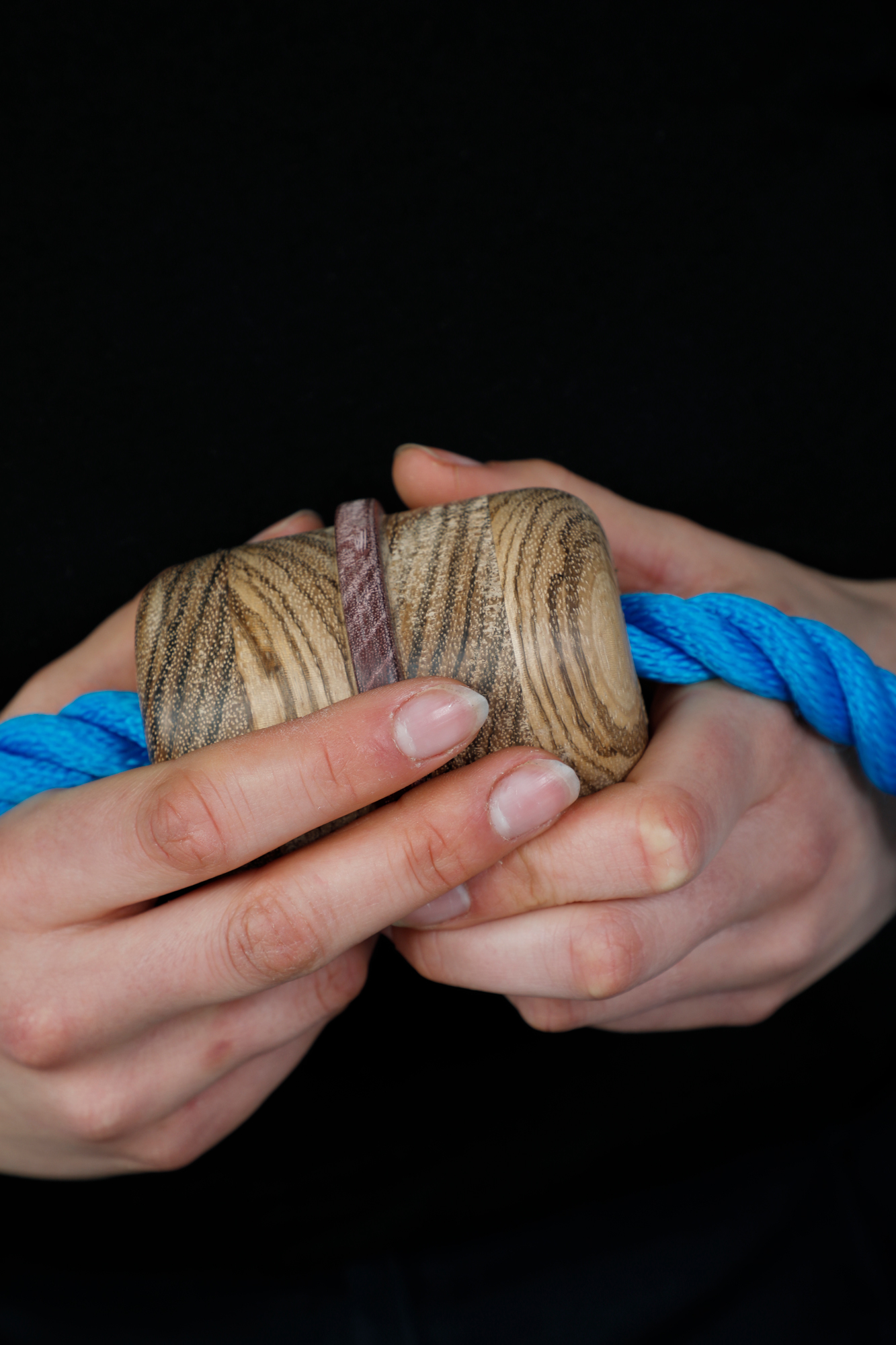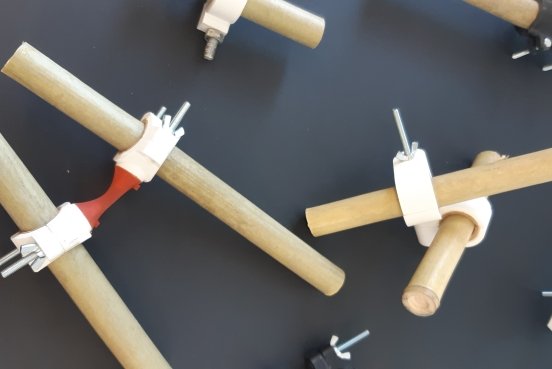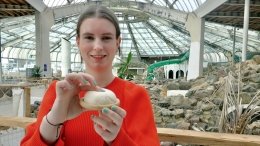Hanne creates collection to improve sleep quality
- Design
Hanne van Beers (Product Design in Arnhem) often noticed students around her working late into the night on their studies, driven by the pressure of deadlines, and then going out for a drink together. "It's perfectly understandable, of course," she says. "After a day of studying, it's nice to do something for yourself. I know that from my own experience. But it does come at the expense of your sleep."

Impact on creativity
She wondered if that was bad. "We all sleep, but actually know so little about it..." In search of answers, Hanne delved into scientific literature, conducted a survey among students, and spoke to sleep therapists and a somnologist (sleep expert) at Rijnstate Hospital. From these sources, she learned, among other things, that sleep problems are widespread and that a lack of sleep has a negative effect on rationality and creativity. "So as an artist, you might be better off going to bed at 9 pm than staying up all night."
Repetitive and meditative
Hanne also discovered that calm breathing contributes to better sleep. "A sleep therapist told me that's why she gives her clients breathing exercises. But she regretted not being able to offer them more, such as material support during the exercises."
This gave Hanne an idea. Using the technique of woodturning, she created a necklace with beads made from reclaimed wood. Clients can move a bead after each breathing exercise. "This repetitive action helps achieve a calm, meditative state. It's similar to using a prayer string."

Artificial lung
Hanne also designed an object for public spaces: an artificial lung made of wood, brass, colback (a high-quality polymeric, thin non-woven fabric), and electronics. "It's well-known that people unconsciously imitate each other, including their breathing pace. So if someone breathes calmly, others tend to follow. I asked the somnologist what a calm breathing pace is and incorporated it into the artificial lung."
Tapestry and textiles
During her quest for the essence of sleep, Hanne discovered a connection between the fast-paced nature of everyday life and sleep problems. "Sleep is more than putting your phone away and getting into bed for eight hours of sleep. Often, sleeping well doesn't work if you're constantly busy during the day. It's important to include moments of rest and contemplation, even while awake." Hanne created a tapestry with images of the sky and clouds, produced using a TC2 loom, which can contribute to this.
She also made cotton textiles for the bed. "These incorporate patterns. People can follow them with their fingers when they lie down at night, lost in their thoughts. Being occupied with something tangible gives you something to hold on to and takes you out of your head, which can help you sleep."
Artisanal and social
During her studies, Hanne was introduced to various materials and techniques, some of which she used for her graduation project. "The artisanal side of the course really appealed to me," she says. "I also enjoyed the freedom to conceive and complete my own products. It allows me to leave my own 'watermark.' Moreover, I like finding solutions to societal problems, as I am doing with my graduation project."
Dutch Design Week
Earlier in her studies, Hanne gained experience working outside ArtEZ. "In the second year, I participated in a project in collaboration with the Open Air Museum, design historian Jeroen van Eijnden, and curator Jorn Konijn. Fellow student Max Claassen and I 'translated' costumes from the museum into a contemporary concept. We even exhibited it at Dutch Design Week. It was super cool!"
Next steps
After her studies, Hanne envisions herself working in a small studio. "That's where I did my internships too. I don't have to be the sole creator of a work; I enjoy working in a team." Hanne also appreciated the collaborative aspect of her studies. "For example, I always enjoyed spending time with other students in the workshop. You can learn a lot from different years and nationalities. I'm a social person, and I'm a co-initiator of Flux, the Product Design course association in formation."
Open up
Hanne advises incoming students to be open and social. "You can learn so much from each other and from lecturers!" She continues, "Also, don't be afraid if your products aren't beautiful. Even what doesn't succeed is instructive and valuable."
For students considering Product Design, Hanne recommends visiting the Open Days in particular. "Also, follow our social media accounts. And don't hesitate to ask students your questions using the chat function on the website." Another option is to take a gap year and participate in work experience days. Hanne did that herself after finishing secondary school, and it gave her a better idea of what she wanted and helped her choose the right course.
Follow Hanne
Instagram: @studio.hanne.van.beers, @flux_artez


